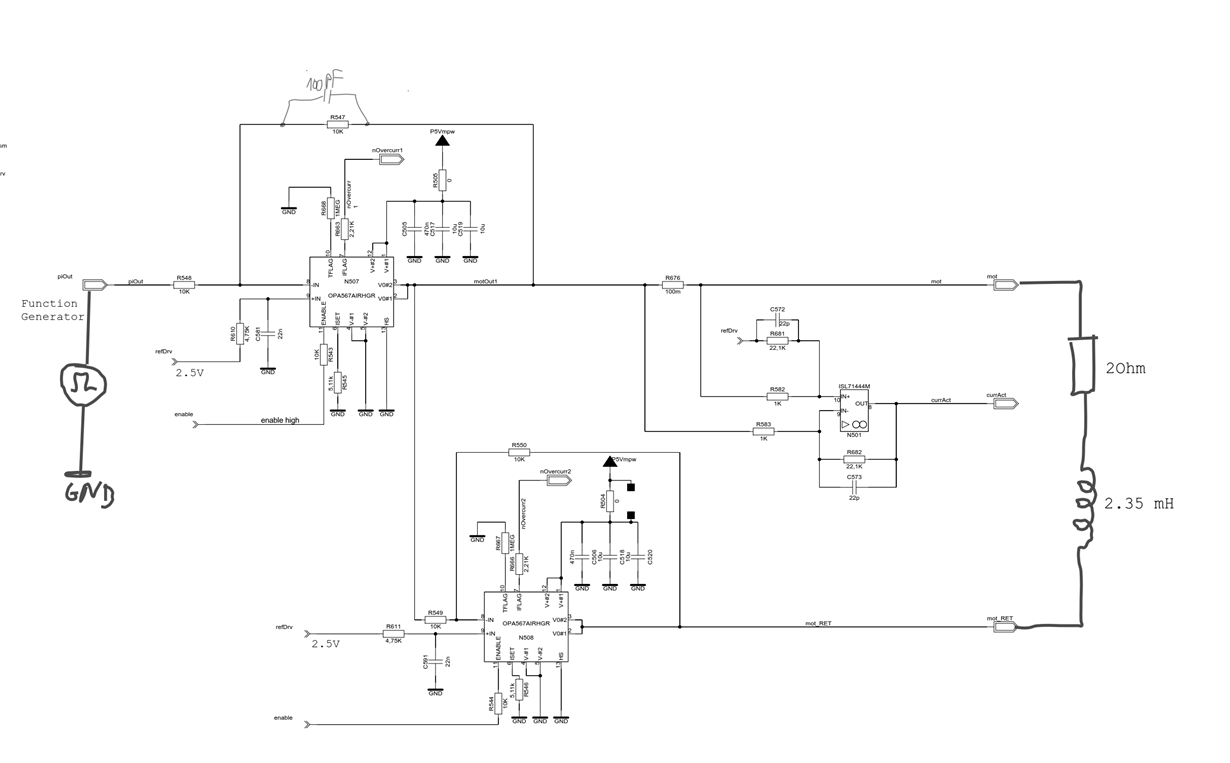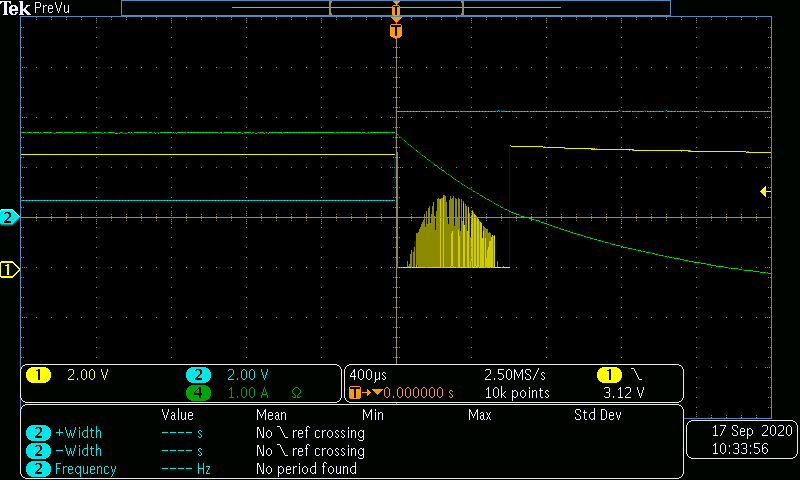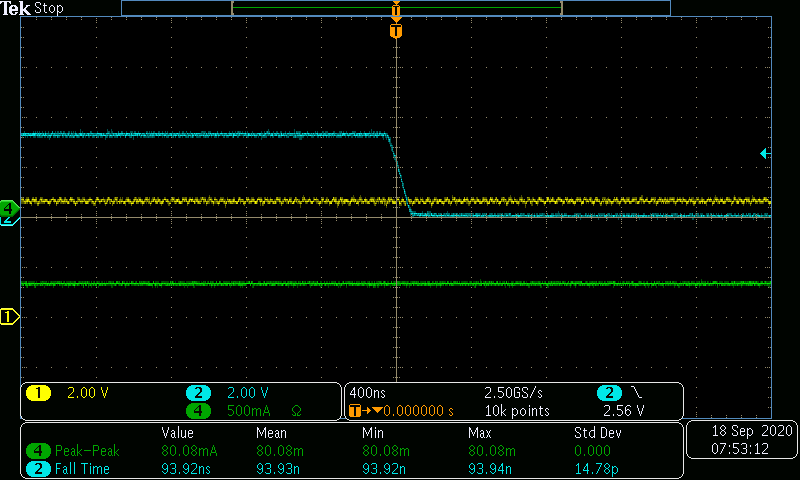Hello,
i have the following problem with the OPA567 Power-OpAmp. Here is my brigde circuit. My load is a 2.25mH 2Ohm Coil.
The OpAmp is powered with a 5V single supply. My Reference Voltage (Midvoltage) is 2.5V. 2.5V at Input corresponds to 0A Current into the Coil.
The function generator at the input of the first OpaAmp generates a Square Voltage with 2.5V Offset and almost 4Vpp Amplitude. With this configuration, I get a Current Limit LOW Signal (Active LOW) that triggers randomly although the current does not reach the set limit.
Blue: input Voltage "piOut" at R548
Yellow: Iflag Signal of N507
Green: Coil Current measured at the "mot" node.
Here is another one zoomed in.
What is the problem here?
Thank you
Best Regards,
Dominkovic






